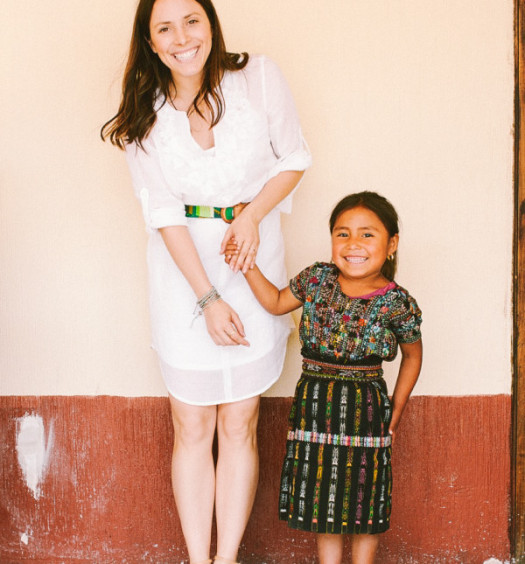5 Points as to Why Sustainable Fashion Has to Move Up the Priority List
Samantha Wong and Tania Reinert-Shchelkanovtseva of A Boy Named Sue join Conscious to share about “Why Sustainable Fashion Matters” here on consciousmagazine.co. Check out their interview and feature here. This article was co-written by Samantha Wong, Tania Reinert-Shchelkanovtseva, and Kadri Kouts.
As we consume more tees and jeans than ever before, the reality of disposable garments is neatly folded away in our bulging wardrobes. From cheap clothes to poor quality standards to bi-weekly collections, the fast fashion cycle is spinning out of control. Apparel and textiles is among the world’s largest industries, using up more of the planet’s resources than it is possible to replenish. If we want to preserve the environment, tackle climate change and focus on empowerment issues while comfortably turning our outfits #insideout – sustainable fashion has to move up the priority list. Here are five points telling you why:
01| FIRST WORLD PRIVILEGE
Buying fast fashion might offer instant gratification, but the benefits – quickly, cheaply, easily – will never be available for the majority of garment workers making ends meet in Bangladesh, Cambodia or Indonesia. With the exception of the SOS-messages stitched in $15 dresses, the people sewing these “bargains” remain anonymous. Low-cost labor is the driving force behind mainstream fashion, yet high street brands tend to keep quiet about working conditions throughout the supply chain.
02 | DISPOSABLE CULTURE
Keeping up with the latest “It” item means an awful lot of textile waste. Instead of showcasing two seasons per year, fast fashion companies are now rolling out “micro-collections” as often as twice a week. Caught in the ebb and flow of trends, our shopping hauls often rise from sartorial hype rather than practical need. Since low-cost garments are not meant to be durable, products are disposed without a second thought – we buy more, wear less.
03 | MATERIAL WORLD
Nearly eighty billion kilograms of textiles take shape each year.[1] Producing chemically processed fibers in such quantities creates irreversible damage to our ecosystems. The use of fossil fuels, water and toxic chemicals to manufacture nylon, polyester or viscose contribute immensely to the world’s carbon footprint. Even cotton crops, seemingly harmless white puffs, are now genetically modified and treated with pesticides to achieve its marketable “pure” qualities. Dynamics within the industry are also changing. China, a heavily polluted frontrunner, is facing rising competition from Myanmar, Haiti and Ethiopia in the hopes to create new “apparel hubs” running on extremely low wages.
04 | EXCHANGE NOT EXPLOITATION
Predominantly young women working within the fast fashion industry are vulnerable to exploitation and forms of abuse. Field investigation by VICE News presents an ugly truth: women in Cambodia would rather work as prostitutes on the street than make clothing for Western labels. Because companies use subcontractors as middlemen to manage their factories, brands are not required to monitor the actual conditions in which our trendy attire is assembled. Fatal accidents in shabby constructions, culminating with 1100 dead in the collapse of Rana Plaza in Bangladesh, are a testament to the lack of social responsibility conducts.
05 | THE FUTURE OF FASHION: WHERE ETHICS MEET AESTHETICS
What can be done to break this cycle? The manufacturing of fast fashion needs to become more transparent and connect consumers with the provenance of their purchases, as shocking as it may be. If more people are aware of who-what-where of the business, buying habits are likely to be altered. Instead of “investing” in global emporiums with ever-expanding retail spaces, shoppers benefit from conscious and creative wardrobes they’ve carefully select and committed to.
Sustainable fashion is a community effort much like the slow food movement. The goal is to inspire, educate and cultivate a community of people – non-profits, NGOs, independent designers – who take a visionary approach to humanize the art of dressing with careful analysis of the production, fair labor practices, eco-fabrics and the revival of craftsmanship skills. While the movement is still young, purchasing consciously and understanding the true cost of fashion is necessary in taking the next steps towards a sustainable (but chic) future.
[1] Lucy Siegle, “To Die For: Is Fashion Wearing Out the World”
Learn. Connect. Act.
Learn more about A Boy Named Sue
Connect via Facebook and Twitter
From the Editor
At Conscious, we are inspired by remarkable people, and so we set out to tell stories that highlight real human interactions and human dignity. You can read more stories like this when you pick up your copy of Conscious Magazine. Subscribe today via our Conscious Shop and subscribe to Conscious Updates.




